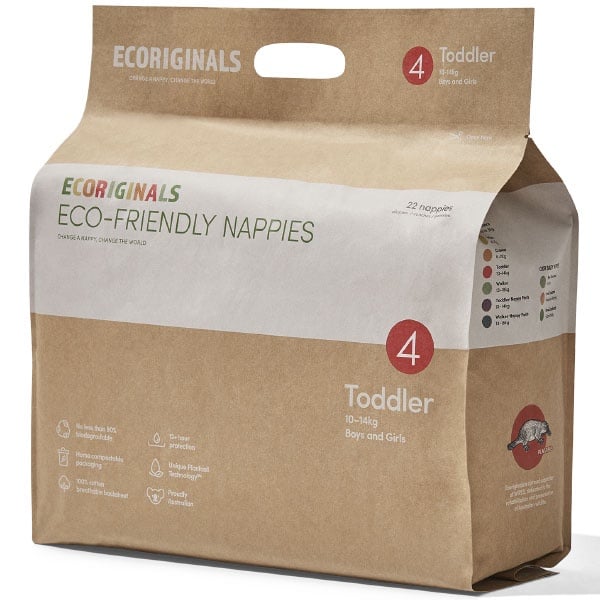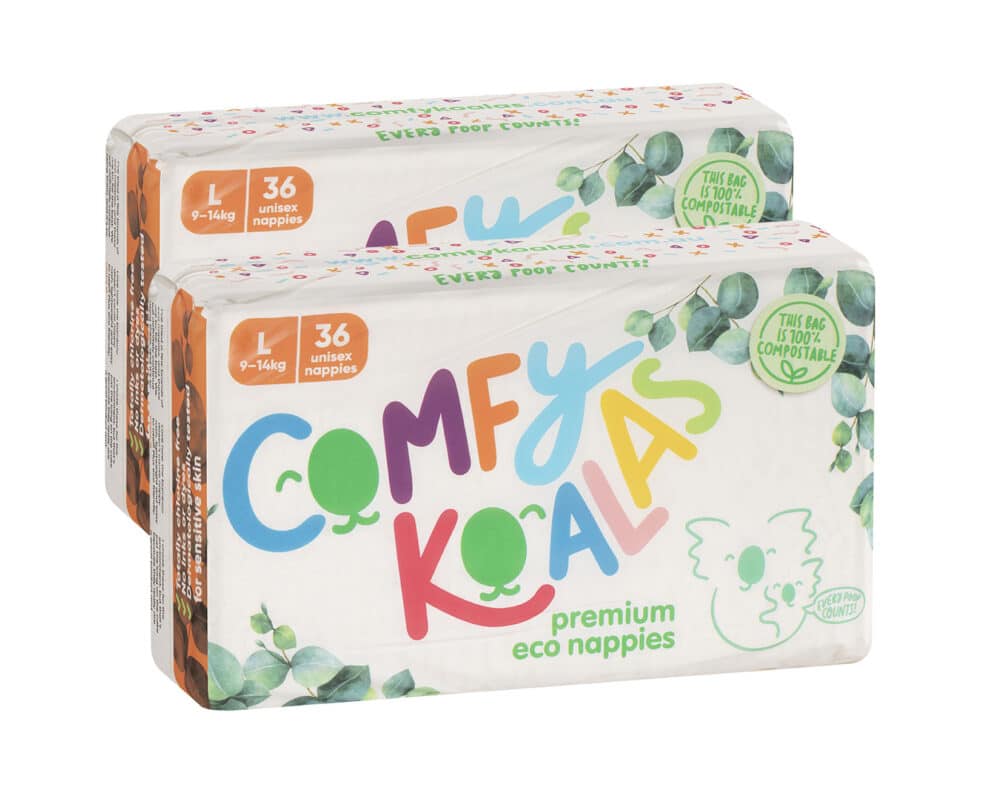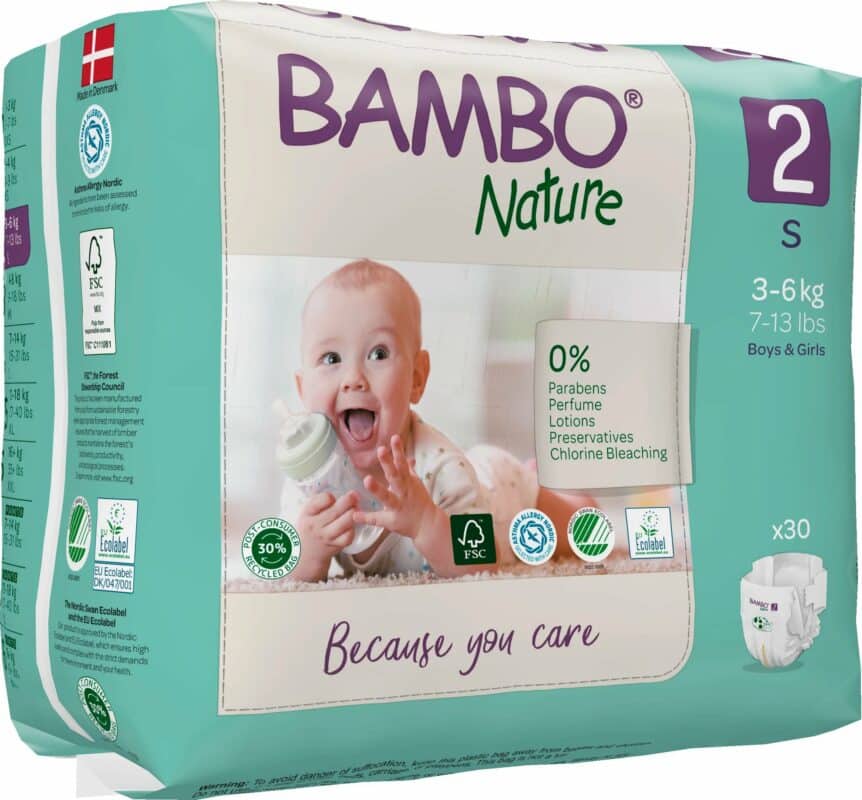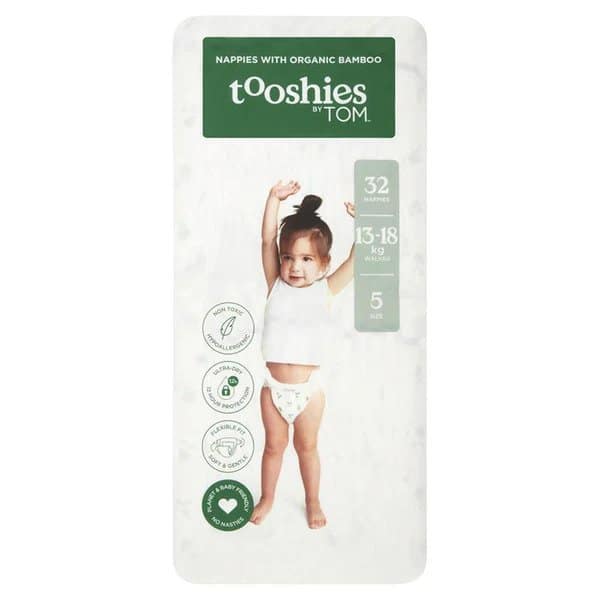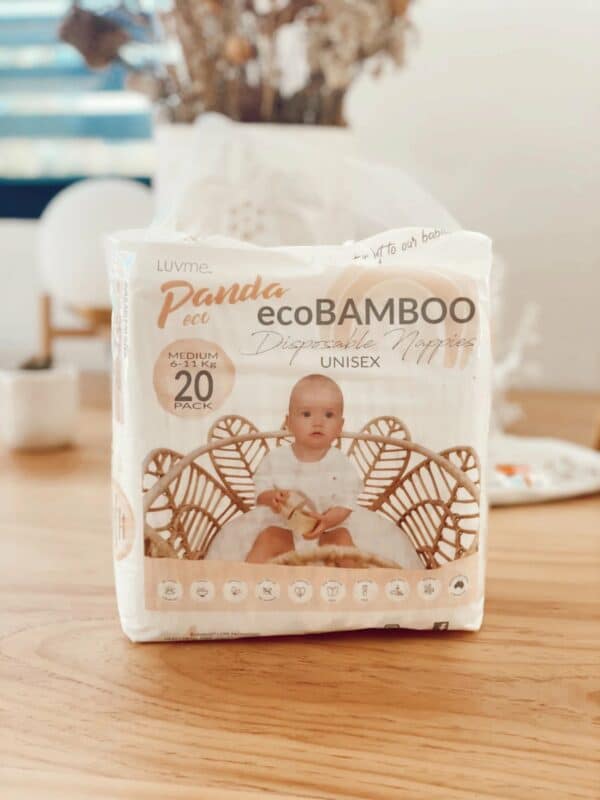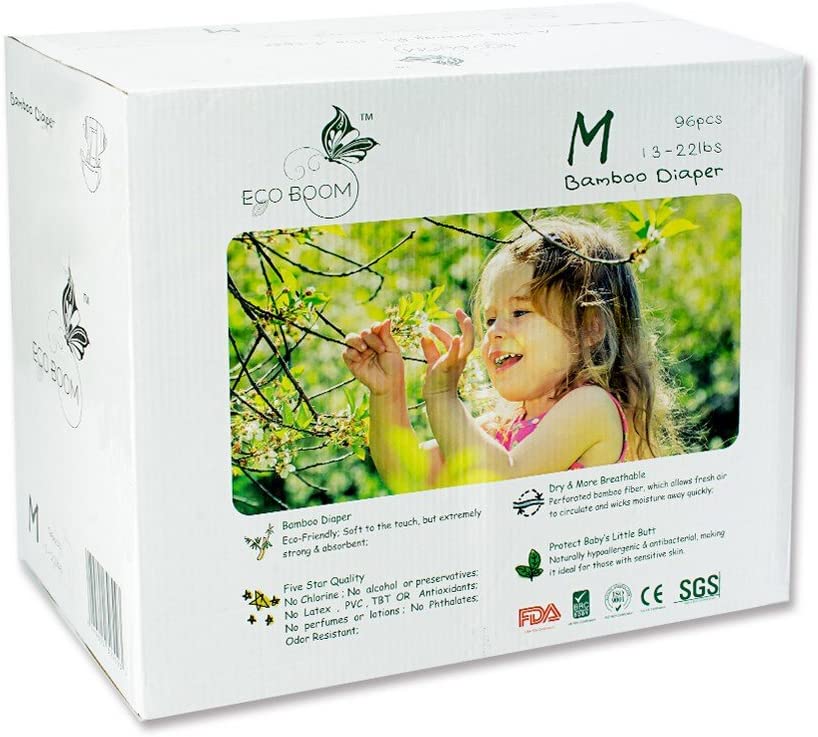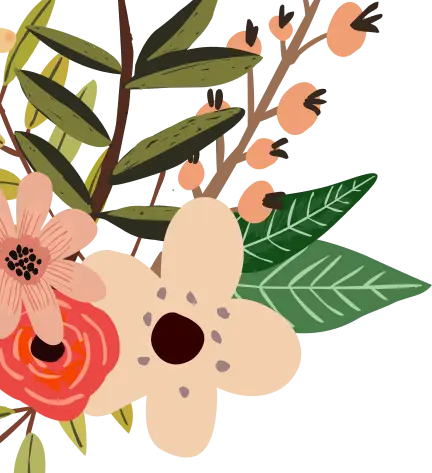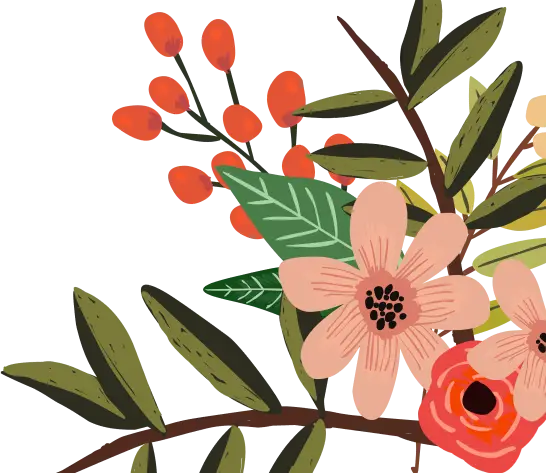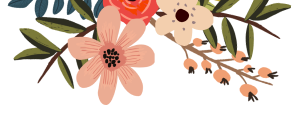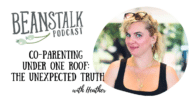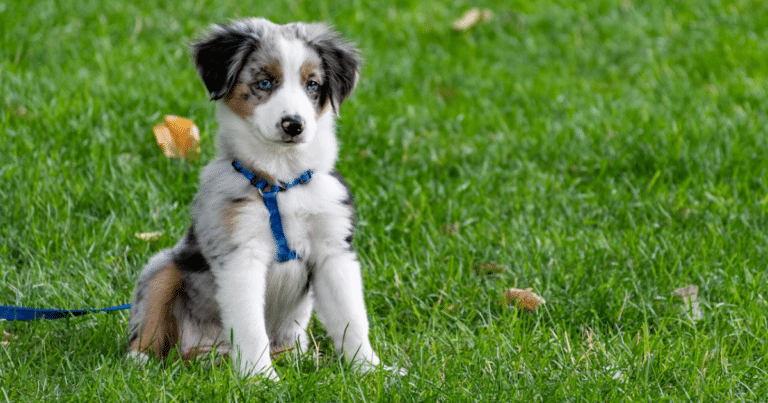
Short of letting your child poo in the flowerbed, there is no genuine environmentally friendly way to keep them rear-end secure before they learn to use a potty or the toilet. But you can make the ecologically sound choice to use eco-friendly disposable nappies instead of standard ones which clog our landfill in their millions every single day.
It’s important to understand that environmentally friendly disposable nappies are not cloth nappies. Cloth nappies are made of a washable fabric so are reusable. For this reason, they give landfill a break, but they put their own pressure on the world’s resources because constant washing uses large amounts of energy and water.
Deciding on the right nappies for your little one is a personal choice, and you need to factor in your lifestyle alongside the kind of environmental footprint you intend to leave.
To help you make a decision, I’ll take you through:
- How do eco-friendly disposal nappies differ from normal nappies?
- What to look for when choosing an environmentally friendly disposable nappy
- How to dispose of eco-friendly nappies in Australia
- Top eco-friendly disposal nappy brands on the market today
Further reading: Where to buy cheap nappies online and never get caught out again.
How eco-friendly disposal nappies differ to normal nappies
Eco-friendly nappies differ from conventional disposable nappies in a number of ways. First, they are composed of more eco-friendly substances, such as wood pulp, bamboo and corn starch. These materials are renewable and biodegradable, so they disintegrate in the environment more quickly than standard nappies made of plastic and other synthetic materials.
Additionally, eco-friendly nappies are typically chlorine-free and utilise less dye, hence reducing the number of toxic chemicals used in their production. This decreases the environmental impact of the nappies and makes them gentler on your baby’s sensitive skin.
Their packaging is another difference between eco-friendly disposable nappies and conventional nappies. Numerous eco-conscious firms employ minimal packaging, which not only lowers waste but also makes their products more practical and transportable.
However, it should be noted that eco-friendly nappies can be more expensive than conventional nappies. This is due to the fact that they are typically produced from more expensive, eco-friendly materials and have a greater production cost. However, if you wish to limit your environmental effect, this expense is definitely worth it.
Finally, disposable eco-friendly nappies are a wonderful option for parents who wish to make a more sustainable decision for their children and the environment. They are made from eco-friendly materials, employ fewer chemicals, and come in minimal packaging.
Always compare costs and browse around to discover the best and cheapest alternative for your family.
What to look for when choosing an environmentally friendly disposable nappy
There are several important factors to consider when selecting an environmentally friendly disposable nappy:
Biodegradable and renewable materials
Look for nappies composed of wood pulp, bamboo, and corn starch. These materials decompose more quickly in the environment than typical nappies composed of plastic and synthetic materials.
Chlorine-free
Avoid nappies that have been bleached with chlorine, as this can cause the release of dangerous substances into the environment. Consider chlorine-free nappies or alternate bleaching techniques.
Dye-free
Some eco-friendly nappies are dye-free, which reduces the number of toxic chemicals used in their production. This is particularly crucial if your infant has delicate skin or if you’re concerned about allergic reactions to specific chemicals.
Lightweight packaging
Many eco-friendly firms utilise minimal packaging to reduce waste and make their products more portable and convenient.
Cost-effective
Eco-friendly disposable nappies may cost more than conventional diapers. Compare the pricing of several brands and the number of nappies each pack to discover the best deal.
Performance
Read reviews and examine the absorbency and fit of the nappies to verify they will fulfill your demands and provide your kid with comfort. It is essential to keep in mind that every infant is unique, and what works for one may not work for another. It is usually a good idea to experiment with numerous brands and styles of nappies to find the one that provides the most comfort and performance for your kid.
Availability
Determine whether the brand you’re interested in is easily accessible in your area, whether online or in-store, so you can buy it when you need it.
Standards
Look for certifications such as FSC (Forest Stewardship Council) or GOTS (Global Organic Textile Standard) to confirm the product was manufactured in a sustainable manner.
By taking these factors into account, you will be able to make a more informed decision when selecting an environmentally friendly disposable nappy for your child. It’s also important to remember that every little bit counts and even minor changes in your purchasing habits can make a significant difference in lowering your environmental impact.
How to dispose of eco-friendly nappies in Australia
It is essential to properly dispose of eco-friendly nappies in order to decrease their environmental impact and maintain a clean community. Australia offers numerous solutions for the proper disposal of eco-friendly nappies.
The first and most prevalent way is to deposit eco-friendly nappies in a dedicated, sealed bin. These containers, sometimes known as “diaper pails,” are designed to hold dirty diapers and can be found at most baby stores and online. Typically, they have a tight-fitting cover to confine odours and a foot pedal for hands-free operation. When the bin is full, it can be emptied into the regular trash.
Alternative disposal methods for eco-friendly nappies include placing them in a plastic bag prior to disposal. This keeps odours at bay and discourages littering. It is essential to wrap the diaper properly and securely so as not to attract bugs or create a health risk.
Avoid flushing nappies down the toilet, as doing so can clog the sewer system and harm marine life. Notably, eco-friendly nappies may not be accepted in all municipal composting programs; therefore, check with your local council before composting them.
Make sure you exercise caution when disposing of eco-friendly diapers. For instance, if you use biodegradable bags for disposal, check with your local council to confirm that they have the proper equipment to handle the bags, as they are not usually accepted in the main trash stream.
In Australia, eco-friendly diapers can be disposed of correctly by placing them in a sealed, designated nappy bin or by wrapping them in a plastic bag prior to disposal. By disposing of eco-friendly diapers appropriately, we may help lessen their environmental impact and maintain clean neighbourhoods.
I’m all for doing everything I can to protect the environment, and that includes being cautious about the products I use for my child. In light of this, I have researched and created a list of the most eco-friendly disposable nappy brands currently available on the market.
Top eco-friendly disposal nappy brands on the market today
ECORIGINALS
From what I’ve seen, Ecoriginals nappies are a great choice for parents who want something safe for the environment and long-lasting for their children. The bamboo and biodegradable plastic used to make these nappies are safe for babies to use, and compared to traditional nappies, they are also better for the environment. I like that they don’t have any harmful chemicals and are FSC certified, which means they were made using good forestry practices. I have used these nappies for my baby, so I know they are soft and absorbent, which makes them great for overnight use or long trips. I would highly recommend Ecoriginals to any parent who wants to reduce their impact on the environment without giving up quality.
Where to buy: Ecoriginals
COMFY KOALAS
My friend swears by Comfy Koala nappies because they are made of biodegradable materials and don’t have any harsh chemicals, scents, or lotions. They are also known for being very absorbent, which makes them good for overnight stays or road trips. She loves that these nappies are good for the environment and also make her baby feel very comfortable.Where to buy: Comfy Koalas
BAMBO NATURE
Parents who care about the environment should also consider Bambo Nature nappies. These nappies are free of chemicals and scents due to the bamboo and biodegradable polymers used in their production, and they are also leak-proof. The wetness indicator is a great feature that makes it easy to know when it’s time to change the nappy, especially on long trips or when it’s been used overnight. I appreciate that the resealable stretch tape tabs are strong and adhesive and that the nappy is comfortable with its flexible waistband and latex-free cuffs. Also, these diapers have two independent eco-labels: the Nordic Swan Eco Label and the EU Ecolabel. This gives you even more peace of mind.
Where to buy: Kogan
TOOSHIES Eco friendly disposable nappies
Tooshies nappies are a great choice for parents who care about the environment and want to buy products made in their own country. These nappies from Australia are made from natural, biodegradable materials and don’t have any harsh chemicals in them. They are also known for being soft and able to soak up water, which makes them perfect for an overnight stay or a long trip. In my experience, these nappies are a great choice for people who want to reduce their impact on the environment without giving up on quality
Where to buy: The Nappy Shop
PANDAS BY LUVME
Pandas By Loveme nappies are another fantastic alternative for eco-friendly parents. These diapers are made of natural materials like bamboo and cornstarch, and they don’t have any harmful chemicals in them. The 360-degree absorbing inner pad is breathable, and the higher elastic waistband helps stop leaks and diaper rash. The fact that they absorb a lot of liquid also makes them great for making sure your baby sleeps well for up to 12 hours. Pandas by Luvme nappies have been praised by parents for their eco-friendly design and excellent absorbency.
Where to buy: Woolworths
ECOBOOM
When it comes to protecting both the environment and your baby’s delicate skin, parents should use Ecoboom nappies. The top and back sheets are made of high-quality bamboo fibre, and the pulp has been treated with TCF to make it hypoallergenic. This makes the nappies perfect for babies with sensitive skin. The biodegradable bamboo material has a silky, soft feel and can soak up a lot of water. I can vouch for Ecoboom diapers’ efficacy and environmentally responsible approach because I have used them on my child.
Where to buy: Amazon



